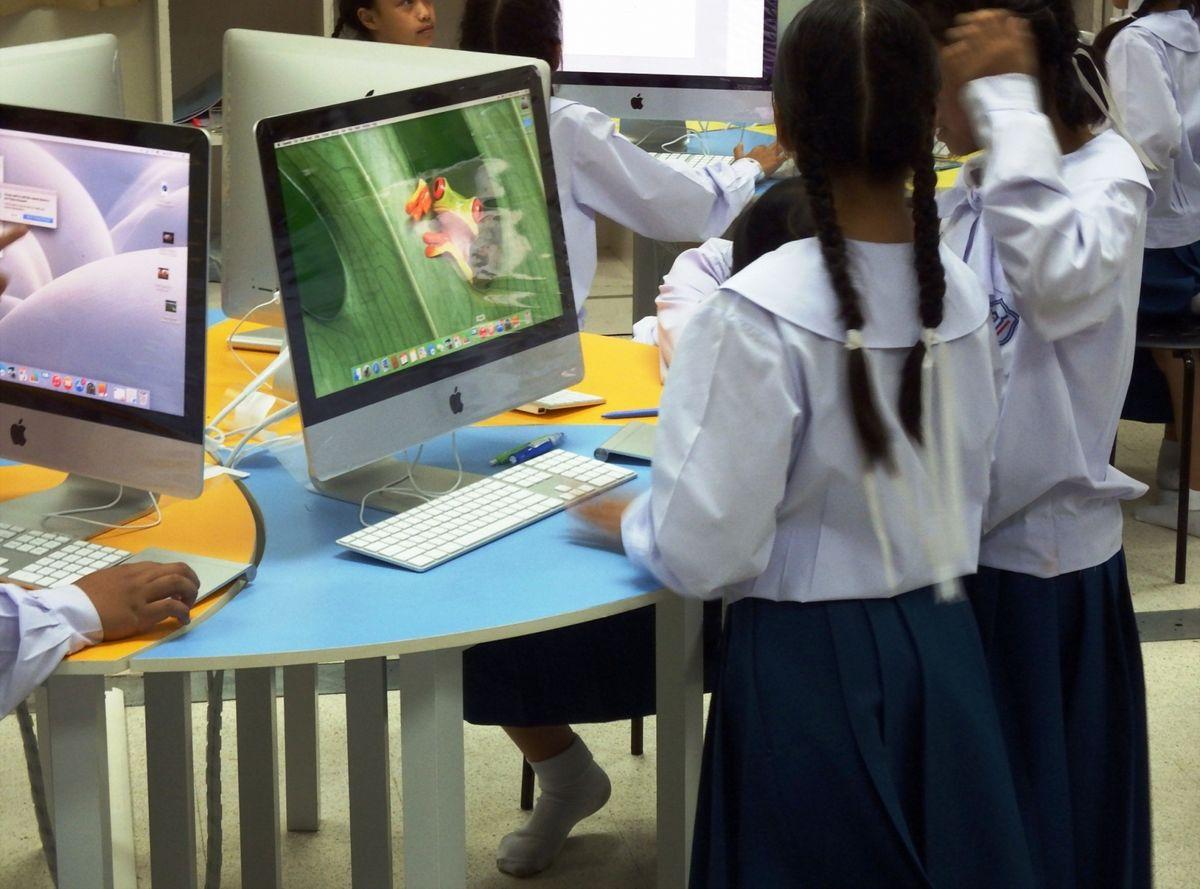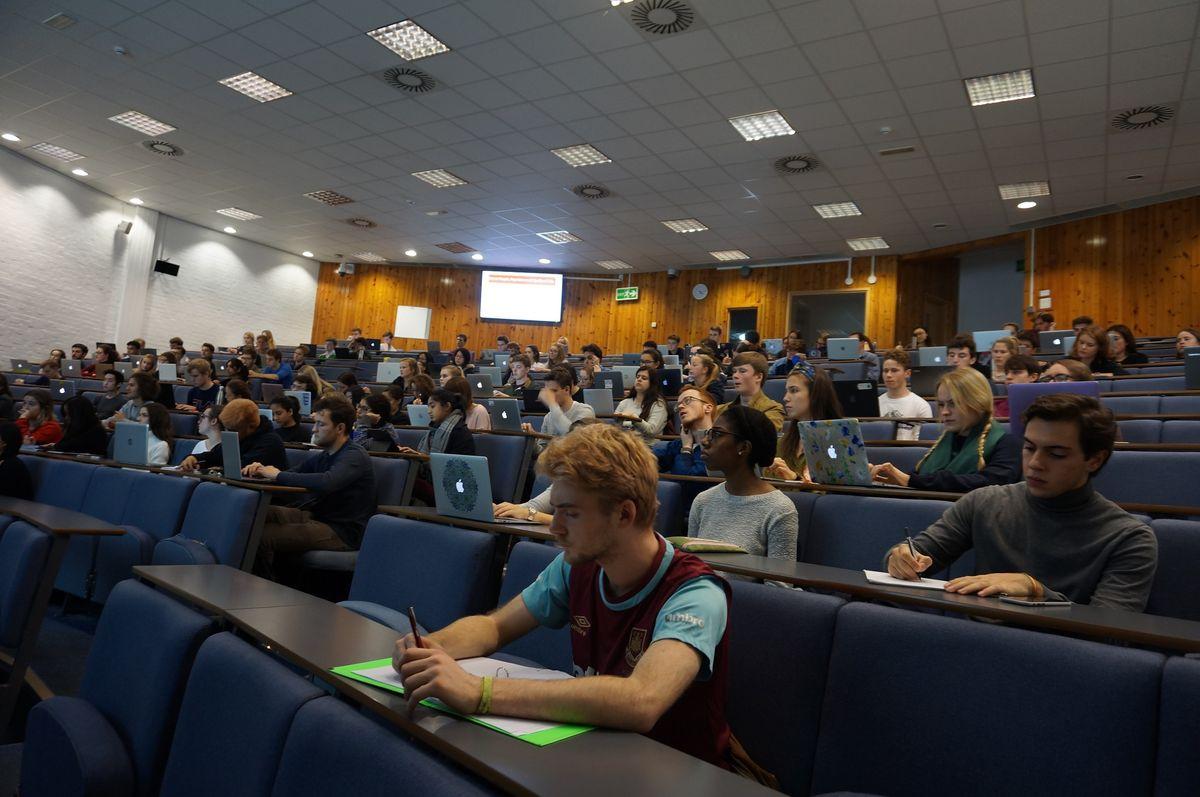Educational lectures have traditionally been seen as monotonous and uninspiring. However, with the advent of new technologies and innovative teaching strategies, the lecture hall is undergoing a transformation. This article explores the cutting-edge methods and approaches that are making educational lectures more engaging and effective. From the integration of advanced audiovisual technology to the incorporation of personalized learning and adaptive instruction, we're witnessing a revolution in the way educators teach and students learn. Discover the innovation sparked by fellow educators and join us in reimagining education through the synergy of play, depth, and ingenuity.
Key Takeaways
- Flex rooms equipped with advanced AV solutions are becoming the preferred choice in higher education, offering unparalleled flexibility and enhanced learning experiences.
- Blended learning and interactive strategies like games with depth and complexity, and collaborative learning are proving to be effective in increasing student engagement.
- Visual storytelling and the use of creative materials in workshops can significantly boost the appeal of educational content and foster creativity in lesson planning.
- Personalized learning and adaptive instruction empower students by tailoring education to their individual needs and promoting a student-centric learning environment.
- Cultivating deep thinking is essential in modern education, moving beyond rote memorization to create learning-centered, student-owned environments that encourage critical thinking.
Harnessing Technology for Enhanced Learning

The Rise of Flex Rooms in Higher Education
Imagine stepping into a classroom that adapts to the day's lesson plan, where walls move and technology responds to the needs of the moment. Flex rooms are transforming the educational landscape, offering dynamic spaces that cater to various teaching styles and learning activities.
A flexible learning space better enables innovative approaches to teaching and learning when compared to the traditional classroom. These rooms are equipped with movable furniture, writable surfaces, and integrated technology, allowing for a seamless transition between lecture, discussion, and group work.
Embrace the versatility of flex rooms to create an immersive learning environment that encourages collaboration and adaptability.
Here's a glimpse of how flex rooms can be utilized:
- Adaptable layouts for lectures, workshops, or group projects
- Technology stations for interactive learning
- Collaboration zones to foster peer-to-peer engagement
By reimagining the physical space, you empower educators to tailor their teaching methods and engage students in a more meaningful way.
Incorporating Advanced AV Solutions
To truly revolutionize the lecture hall, incorporating advanced AV solutions is a game-changer. Professional AV integration is no longer a luxury but a necessity in the digital era. By integrating sophisticated audiovisual technology, you can ensure seamless operation and enhance the learning experience.
- Design and installation of AV systems tailored to educational needs
- Video collaboration tools for interactive learning
- Audio solutions for clear, uninterrupted communication
Embrace the power of AV technology to create a dynamic and immersive educational environment. The right AV setup can transform a traditional classroom into a hub of engagement and collaboration.
Remember, the goal is to maximize the potential of your AV investments. Partner with experienced AV integrators who understand the unique demands of higher education. They can help design, install, and manage collaboration environments that cater to the evolving needs of students and educators alike.
5 AV Tech Essentials for the Modern Classroom
In the modern classroom, audiovisual (AV) technology is indispensable for creating dynamic learning experiences. It's not just about installing equipment; it's about fostering an environment conducive to collaboration and engagement. Here are the five essentials:
- Interactive Whiteboards: Transform traditional lectures by allowing real-time interaction and annotation.
- Wireless Presentation Systems: Enable students and educators to share content seamlessly from any device.
- Classroom Audio Systems: Ensure that every student can hear clearly, regardless of where they are seated.
- Document Cameras: Display detailed images or live demonstrations to the entire class.
- Learning Management Systems (LMS): Centralize course materials and facilitate communication between students and educators.
Embrace these tools to cultivate a fully evolved educational environment that resonates with today's tech-savvy students.
Remember, the goal is to enhance the educational experience, not to overwhelm it with technology. Striking the right balance is key to creating the best flex rooms and learning spaces that adapt to various teaching styles and student needs.
Interactive Strategies for Student Engagement

Blended Learning: Combining Online and In-Person Instruction
Imagine a classroom that extends beyond its four walls, where learning is not confined to a physical space but is enhanced through digital means. Blended learning is your gateway to this educational paradigm shift, seamlessly integrating online resources with traditional face-to-face teaching.
By adopting blended learning, you're not just changing the location of education; you're transforming its very nature.
Here are some strategies to consider:
- Utilize the flipped classroom model to encourage pre-class engagement.
- Implement the Flex model, allowing students to choose their learning path.
- Incorporate synchronous and asynchronous sessions for flexibility.
Remember, the goal is to empower your students, making them active participants in their education. Blended learning is not just about technology; it's about creating a more dynamic, interactive, and personalized learning experience.
Games and Play: Infusing Classic Activities with Depth and Complexity
Imagine transforming the traditional classroom into a dynamic space where classic games become powerful learning tools. By infusing these activities with Depth and Complexity, you create an environment ripe for critical thinking and engagement.
Engage students in a playful learning journey, starting with timeless games and gradually adding layers of complexity that challenge their intellect and creativity.
Here's how you can start:
- Revisit classic games and identify their core components.
- Integrate elements of Depth and Complexity to enhance these games.
- Design educational games tailored to your curriculum.
- Exchange ideas in a collaborative workshop setting.
Remember, the goal is not just to play, but to elevate the play to a learning experience that resonates with students of all levels. The process of adding depth and complexity to games is not only inclusive but also a proven method to create equitable and efficient learning experiences.
Group Brainstorming and Collaborative Learning
Embrace the power of group brainstorming to transform your classroom into a dynamic learning environment. By encouraging students to collaborate, you're not only fostering a sense of community but also enhancing their ability to tackle complex problems together. Here's how you can integrate collaborative learning effectively:
- Start with clear objectives for each session to guide discussions and outcomes.
- Use digital tools like ClassPoint to facilitate brainstorming and idea sharing.
- Rotate roles within groups to ensure active participation and diverse perspectives.
Remember, the goal is to create a space where students feel comfortable to express their ideas and learn from one another.
By implementing these strategies, you'll see a marked improvement in student engagement and knowledge retention. Collaborative learning isn't just about working together; it's about elevating the entire educational experience.
Visual Storytelling and Creative Materials

Designing Visually Appealing Educational Content
You understand the importance of captivating your students with visually appealing educational content. But how do you begin to transform your lectures into a visual feast that engages and informs? Start by identifying the key elements that make content visually appealing: color, layout, imagery, and typography.
- Color: Choose a palette that reflects the tone of your subject matter and enhances readability.
- Layout: Organize information in a way that guides the student's eye and facilitates understanding.
- Imagery: Use relevant images, charts, and diagrams to illustrate concepts.
- Typography: Select fonts that are easy to read and use them consistently.
Embrace the power of visual storytelling to make complex ideas more accessible and memorable. By integrating these elements thoughtfully, you can create materials that not only look great but also support deeper learning.
Remember, the goal is to design educational content that resonates with your students. Utilize tools like Illustrator for crafting engaging diagrams or Smart Sparrow for interactive lesson plans. With these resources, you're well on your way to creating an immersive learning experience.
Workshop: Unleashing Creativity in Lesson Planning
Unlock the creativity of budding artists in your classroom with a workshop designed to revolutionize your approach to lesson planning. This hands-on session will provide you with a variety of visually appealing teaching materials, ensuring that every lesson captivates and engages your students.
In this collaborative environment, you'll explore innovative teaching approaches and leave with a toolbox of fresh ideas. It's not just about the materials, but also about fostering a culture of creativity and critical thinking.
During the workshop, you'll delve into the practicalities of integrating AI into your curriculum. You'll learn how to use AI as a tool to enhance writing skills and academic ethics, rather than as a shortcut. Small group activities will allow you to try out new prompts and strategies, ensuring you leave with concrete lesson plans.
Join fellow educators in this journey of discovery and empowerment. Together, we'll transform the traditional lesson plan into a dynamic learning experience that encourages students to express themselves authentically and think outside the box.
The Impact of Visual Aids on Student Engagement
Visual aids are not just supplementary; they are a cornerstone of engaging educational experiences. The use of visual aids and interactive content on screens has been shown to significantly enhance retention of information. By transforming abstract concepts into tangible visuals, students can grasp complex ideas more readily.
- Visual aids provide a multisensory learning experience.
- They foster a more inclusive classroom, catering to different learning styles.
- Interactive screens encourage active participation and collaboration.
Embrace the power of visual storytelling to make your lectures more dynamic and memorable. The right visual aid can turn a passive listener into an active learner, deeply involved in the educational journey.
Remember, the goal is to create an environment where visual aids are not a distraction but a means to clarify and reinforce the subject matter. With thoughtful integration, these tools can make a profound impact on how students engage with and retain course material.
Personalized Learning and Adaptive Instruction
Tailoring Education to Individual Student Needs
In the quest to provide a more personalized educational experience, one effective strategy is to create personalized learning plans for each student. These plans are not just schedules; they are comprehensive outlines that encapsulate a student's aspirations, strengths, and areas for growth, ensuring that their educational journey is as unique as they are.
By embracing individualized learning paths, educators can offer real-time feedback and formative assessments that are crucial for tracking progress and adapting instruction to meet the evolving needs of each student.
To implement personalized learning effectively, consider the following steps:
- Identify the unique learning goals and preferences of each student.
- Utilize data analysis to inform instructional decisions and personalized interventions.
- Regularly review and adjust learning plans to reflect students' progress and changing needs.
This approach not only fosters a deeper connection between students and their learning but also empowers them to take ownership of their educational outcomes. As we understand more about how the human brain learns, tailoring education becomes a pivotal element in helping students reach their full potential.
Leveraging Technology for Customized Learning Experiences
Imagine a classroom where technology isn't just a tool, but a catalyst for personalized learning. By leveraging advanced educational software, you can create individualized learning paths that adapt to each student's unique needs. This approach not only respects their pace and preferences but also empowers them to take charge of their own educational journey.
- Personalized assessments allow for a nuanced understanding of each student's strengths and weaknesses.
- Real-time feedback from AI-powered tools provides immediate insights, helping students to quickly identify and work on areas that need improvement.
- Data analysis and progress tracking enable you to refine your teaching strategies, ensuring that every lesson resonates with your students.
Embrace the power of technology to craft learning experiences that are as unique as your students. With the right tools, the possibilities for customization are endless, leading to a more engaging and effective educational environment.
Empowering Student Agency in the Learning Process
Empowering students to take charge of their education is a transformative step towards a more engaging and effective learning experience. Choice, Ownership, and Voice in an Authentic learning environment (COVA) are key elements that can be integrated into your teaching strategy to foster student agency. By providing students with options and involving them in decision-making, you encourage a deeper connection with the material and a more personalized approach to learning.
In this workshop, you'll learn to craft learning experiences that resonate with individual student needs, preferences, and strengths. You'll explore how to create flexible learning paths and leverage technology for adaptive instruction.
Consider the following steps to empower student agency:
- Introduce personalized assessments to gauge each student's unique progress.
- Differentiate content delivery to cater to diverse learning styles.
- Provide structures that support all students, including those with disabilities or those learning in a bilingual environment.
- Build a toolkit of strategies for fostering independence and a love for learning.
Remember, the goal is to create an inclusive, student-centric learning environment where every student feels equipped to unleash their full potential.
Cultivating Deep Thinking in the Classroom

Moving Beyond Rote Memorization
To truly grasp and retain knowledge, it's essential to engage in active learning techniques. These methods foster a deeper understanding and encourage critical thinking, differentiating them from the superficial retention associated with rote memorization. For instance:
- Summarize key points in your own words.
- Teach the material to someone else.
- Create and use flashcards for self-testing.
- Employ mnemonic devices for complex information.
Embrace a variety of study methods to prevent boredom and enhance retention. Incorporate reading, videos, and active participation for a well-rounded approach.
Spaced repetition is another powerful strategy. Reviewing material at increasing intervals allows your brain to consolidate information, making it more likely to stick. Here's a simple schedule to get started:
| Day | Activity |
|---|---|
| 1 | Initial learning session |
| 3 | First review |
| 7 | Second review |
| 14 | Third review |
| 30 | Fourth review |
By integrating these techniques, you can move past memorizing facts and towards a more meaningful learning experience that stays with you long-term.
Building Thinking Classrooms in Mathematics
To revolutionize your mathematics classroom, it's essential to shift from passive learning to an environment where students actively engage in deep thinking. Transform your classroom into a space where mathematical concepts are not just taught but explored and understood.
Consider the following strategies to foster a thinking classroom:
- Encourage open-ended problem-solving rather than just procedural tasks.
- Utilize manipulatives and visual aids to deepen understanding.
- Promote group work to stimulate discussion and idea sharing.
- Integrate real-world examples to make abstract concepts tangible.
By creating a learning-centered, student-owned environment, you empower students to take charge of their mathematical journey, leading to a more meaningful and lasting grasp of the subject matter.
Remember, the goal is not just to cover the curriculum but to inspire a genuine curiosity and love for mathematics. Embrace these changes, and watch as your students develop into critical thinkers who are not only proficient in mathematics but also passionate about it.
Fostering a Learning-Centered, Student-Owned Environment
To cultivate a student-owned learning environment, it's essential to start with a foundation of trust and support. By establishing a positive classroom atmosphere, you encourage students to take risks and engage deeply with the material.
Embrace the COVA strategy - Choice, Ownership, and Voice in an Authentic learning setting. This approach empowers students to direct their educational journey, fostering independence and a passion for learning.
Consider these steps to enhance student agency:
- Provide personalized learning experiences that cater to individual student needs.
- Leverage technology to create adaptive learning paths.
- Implement formative assessments that reflect learner variability.
- Develop a toolkit of strategies for inclusive education, supporting diverse learning needs.
Remember, the goal is to create a learning environment where students feel valued and motivated to explore their interests and strengths. By doing so, you lay the groundwork for a transformative educational experience.
Conclusion
In conclusion, the future of education hinges on our ability to innovate and engage. By embracing advanced audiovisual technology, fostering active participation, and leveraging the power of blended learning, we can transform the traditional lecture hall into a dynamic environment that captivates and educates. Workshops that focus on visual storytelling, personalized learning, and the integration of games with depth and complexity are paving the way for educators to revolutionize their teaching methods. As we reimagine education through these innovative methods, we not only enhance the learning experience but also empower students to think critically and creatively. The journey towards an evolved educational landscape is an exciting one, and it is time for educators to lead the charge with ingenuity and passion.
Frequently Asked Questions
What are flex rooms in higher education?
Flex rooms are innovative classrooms equipped with advanced audiovisual technology that provide unparalleled flexibility for students and educators. They support various teaching methods and learning styles, allowing for both in-person and remote instruction.
How can AV technology enhance educational lectures?
AV technology can transform educational lectures by facilitating interactive learning experiences, enabling seamless collaboration, and providing access to high-quality multimedia resources that can help to better engage students and enrich the learning process.
What is blended learning and how does it benefit students?
Blended learning is an educational approach that combines online and in-person instruction. It allows students to learn at their own pace, provides access to a wider range of resources, and encourages active participation through various digital platforms.
How can visual aids impact student engagement?
Visual aids can significantly increase student engagement by making content more accessible and easier to understand. They help to capture students' attention, aid in memory retention, and can make learning more enjoyable.
What does personalized learning involve?
Personalized learning involves tailoring educational experiences to individual student needs, preferences, and performance. It leverages technology to provide customized learning experiences and empowers students to take an active role in their education.
How can educators create a learning-centered, student-owned environment?
Educators can create such environments by moving beyond traditional teaching methods, encouraging deep thinking and problem-solving, and providing opportunities for students to take ownership of their learning through collaborative and interactive activities.
